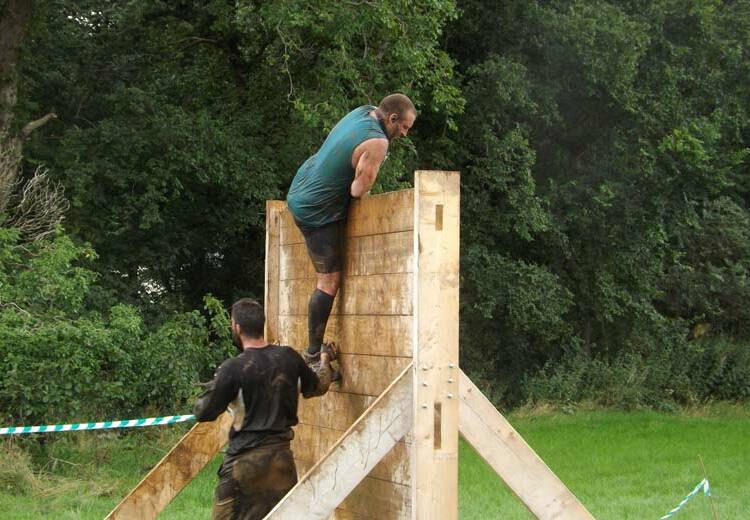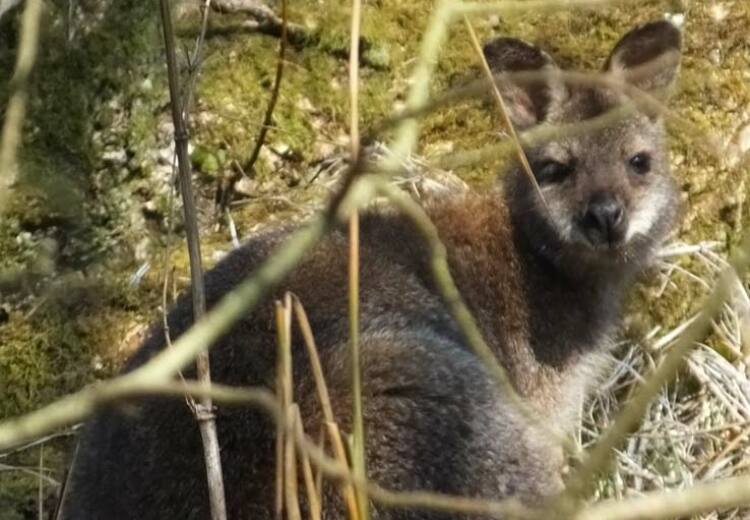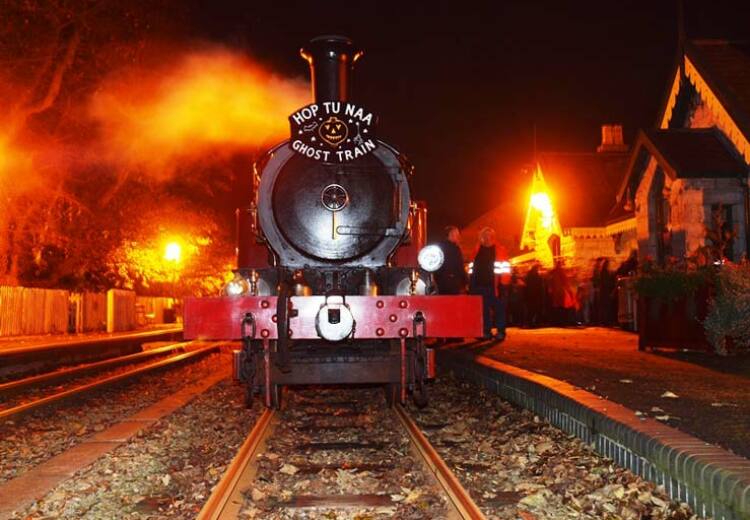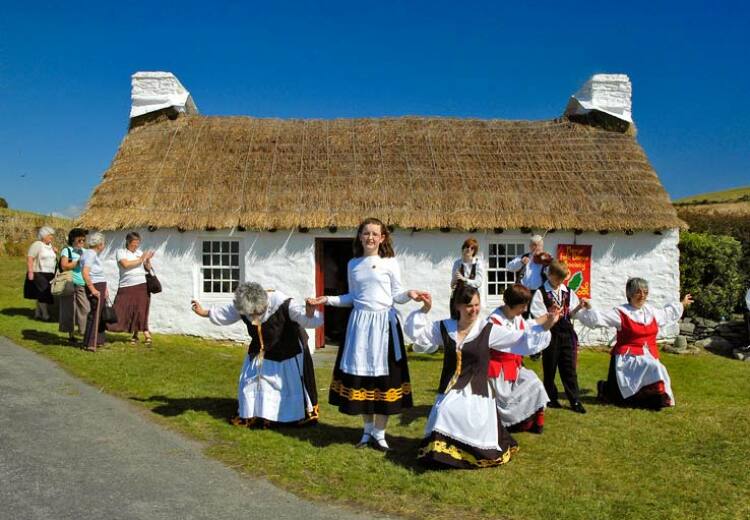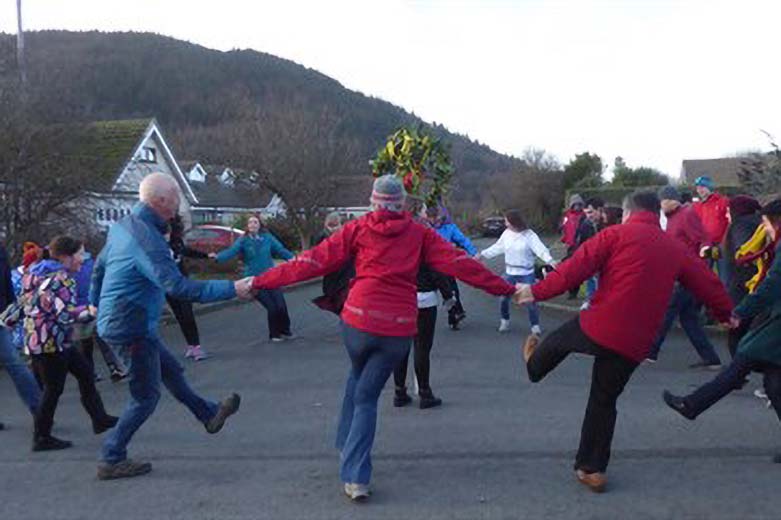
Although other cultural pursuits may have lapsed, the annual procession of dancers, singers and musicians gathered for the traditional Hunt the Wren, travelling through the streets and lanes of some of the main towns and villages of the Island.
In the midst of the bush hung an unfortunate wren, these days not killed specifically for the purpose, but a bird who has met a natural death, or a simile.
Those donating to charity were rewarded with a choice of coloured ribbon (rather than a feather), in the hope of attracting good luck for the following year, and particularly useful in the event of shipwreck, or the presence of witchcraft.
It's all over by noon, after which a feather (or ribbon) is deemed to be worthless. Why mid-day is the subject of discussion, although E. Kermode remarked in his unfinished manuscript, Celtic Customs, that of course by this time the unfortunate bird is almost featherless.
But later everyone headed for the front green at Tynwald Hill for the start of the local game of Cammag.
Revived in recent years, this annual skirmish involves teams representing both the north and the south of the Island, but has few rules. It's a game of three halves and a singular focus on a sometimes elusive ball, known as a crick, with an historical relationship with shinty, hurling and hockey.
The game was followed by the now traditional music session at the Tynwald Hill Inn, where everyone could relive the game, discuss technique and plan next year's strategy.




